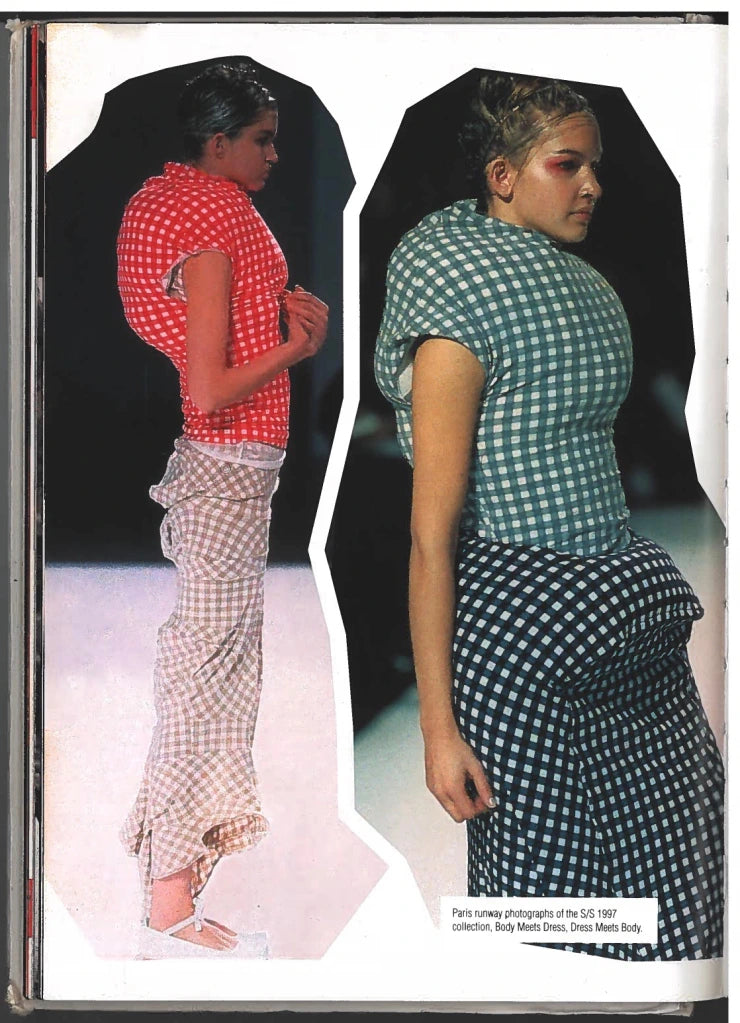These scans will ultimately be part of a larger research project for looking at consumer capitalism within exchange of fashion culture between Japan and France. These scans are of COMME des GARÇONS, Gothic Lolita and Visual Kei style. For the COMME des GARÇONS scans of Body Meets Dress, Dress Meets Body Spring/Summer 1997 it represents Rei Kawakubo's internationally recognised ability to recreate and disassemble what fashion means. Her use of philosophical concepts developed in post war Japan and her influence in Harajuku fashion scene in the 1970's through the 90's is why she is so important to my overall research on this topic. Through her upbringing and early career in the Central Apartments of Harajuku, a creative HUB of fashion designers, graphic designers and other artists, she found herself in the group of designers known as "Mansion Makers." Home based designers that would have a very small team and cheap rent that allowed the artists to create, unhindered by many stresses of capitalism and western fashion systems.
Gothic Lolita and Visual-Kei Styles are the embodiment of how Kawakubo's practices democratized into the larger fashion scenes of Japan. Many designers and creates from Harajuku say that they directly take inspiration from Kawakubo and COMME des GARÇONS as a brand. My research focuses on this because of how important the use of her subversive creativity that lead designers like Naoto Hirooka and stylist Sonya Park have such a potent influence on Japanese subcultures of fashion.

"Where should I wear this? Is this for everyday, or for the stage?" (Pg. 135, Godoy).
In Osaka, the term "iki" referred to the uniqueness of traditional kimonos that were worn in the Edo period, but in avant-garde ideologies of art and fashion developed by COMME des GARÇONS, this take the post modern form of the "abject." This expression of the abject is an identity and ideology that I am explicitly interested in when analysing this exchange of fashion ideologies and individual expression between Japan and France. Gothic Lolita and Visual-Kei feature French rococo, think Marie Antoinette, style but with updated and modern for the modern girl. In this way, the clothes are not made to be sexualizing but instead for the independant woman, which is taken directly from the ideologies of Rei Kawakubo.


If you want more scans and avant garde fashion discussion follow and find me at Brimmarchive on Instagram.








